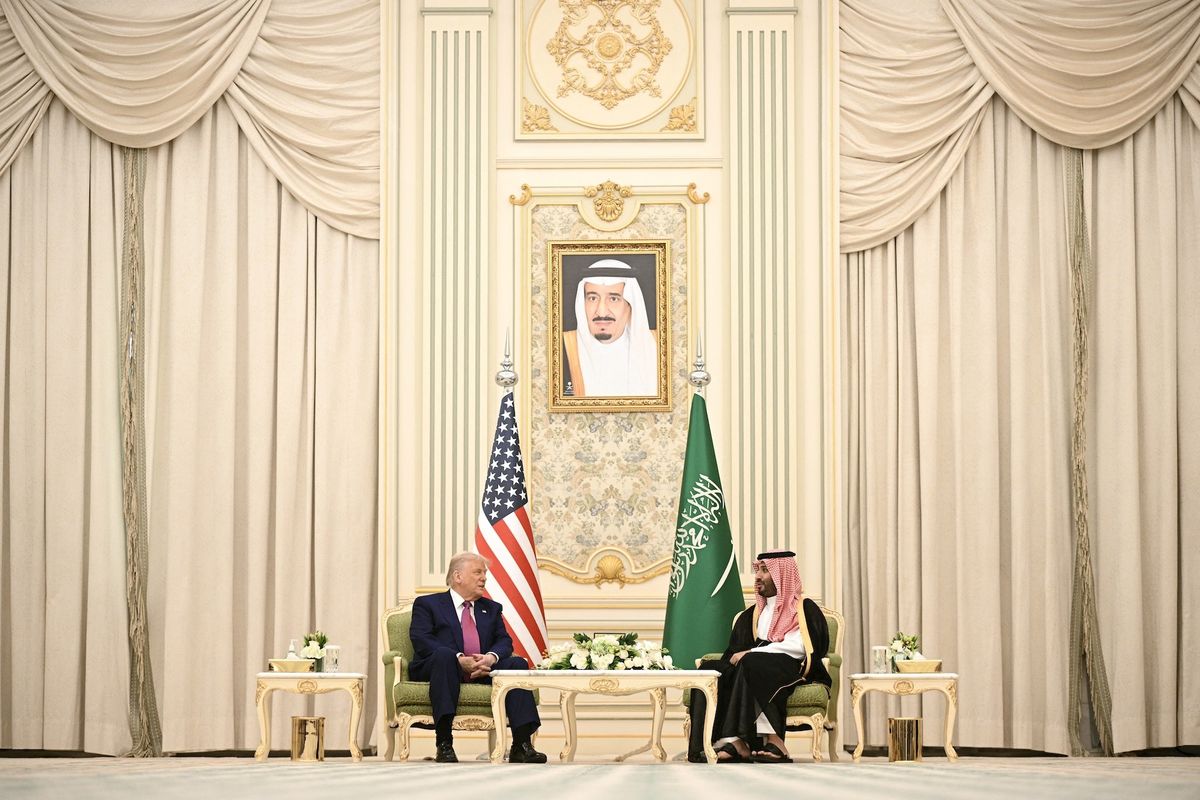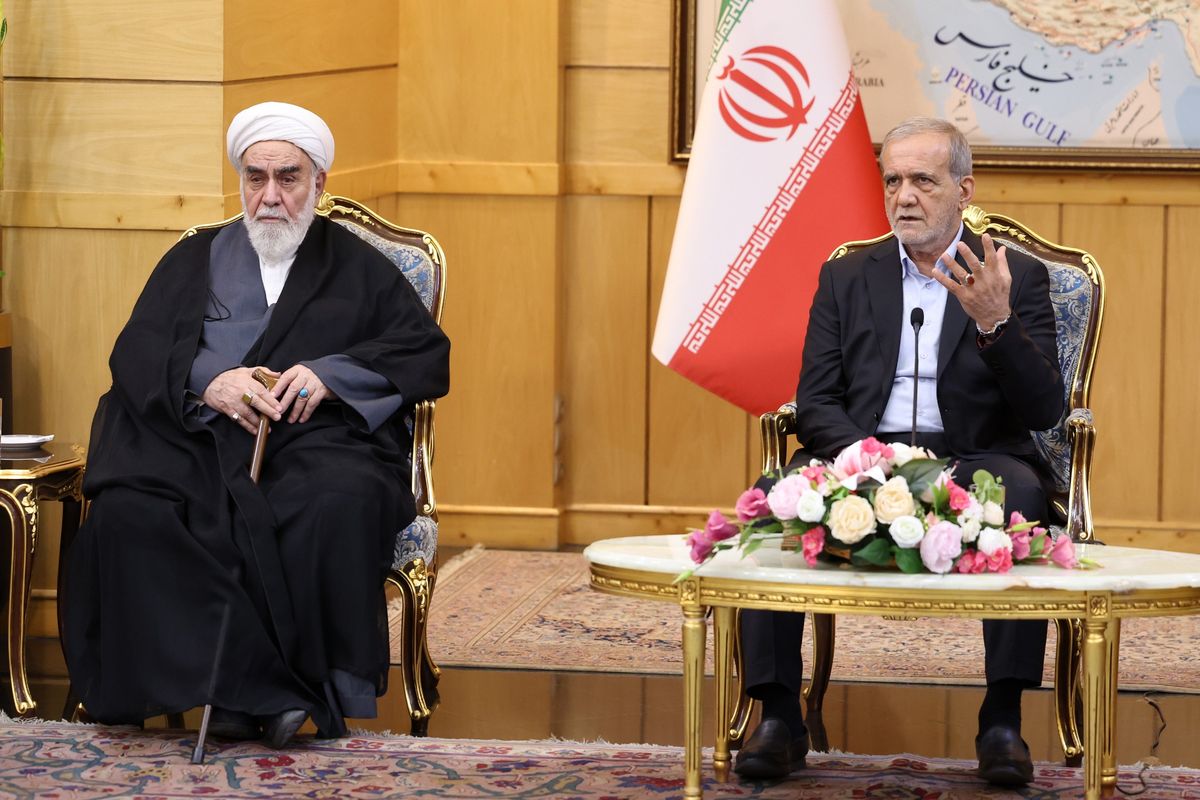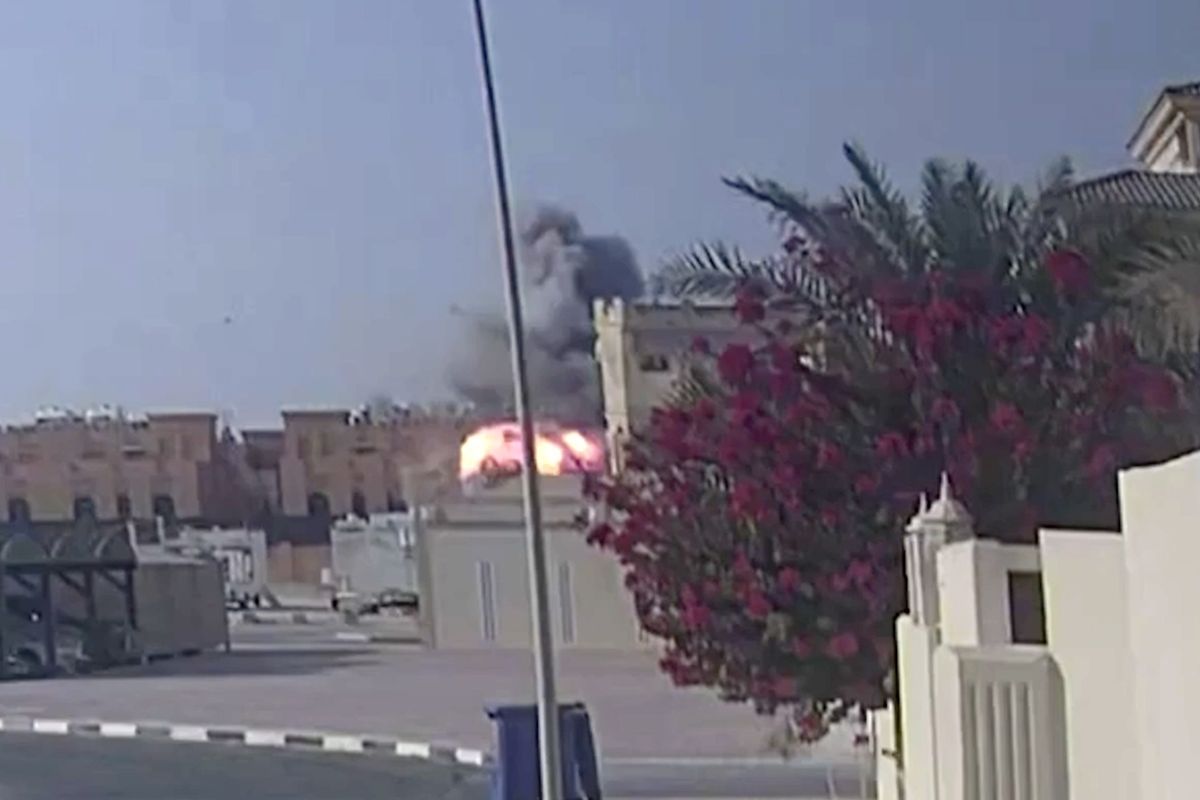Last week, The White House announced President Donald Trump’s vision for a ‘comprehensive peace agreement between Israel and the Palestinians.’ The White House refers to it as a peace to prosperity plan but it has its shortcomings, namely that the Palestinians weren’t involved in its drafting and rejected the plan almost as soon as it was announced. In fact, the Palestinian Authority was so outraged that it moved on Saturday to sever ties with both the U.S. and Israel.
The European Union, too, expressed ‘major reservations’ about the proposal, saying it doesn’t meet “internationally agreed parameters” on important issues including the location of borders. The EU’s foreign policy chief, Josep Borrell said he remains committed to a “negotiated two-State solution, based on 1967 lines, with equivalent land swaps, as may be agreed between the parties, with the State of Israel and an independent, democratic, contiguous, sovereign and viable State of Palestine, living side by side in peace, security and mutual recognition."
The Cipher Brief wanted a candid conversation about how the plan is being received by other traditional partners in the process, so we tapped former Associate Deputy Director for Operations at CIA, Robert Richer for his take on the announcement. Richer has close ties to Jordan and during his time at CIA, served as the Chief of the Near East and South Asia Division, responsible for Clandestine Service Operations throughout the Middle East and South Asia. He currently consults on Middle East and national security issues and is a senior partner with International Advisory Partners.
Our conversation has been lightly edited for clarity and length.
The Cipher Brief: What was your reaction to news of The White House plan?
Richer: I was sitting in the Middle East when the announcement came out, and we knew it was not going to be a working proposition. I was with some people who were involved with it who were trying to support the Peace Plan in that region. In reality, it looked like a political stunt. It was timed with Netanyahu’s next bid for prime minister. We had been forewarned about how this administration has approached the topic of Jerusalem, Israel's capital, and the annexation of the Jordan Valley and the Israeli settlements. So, with that serving as our preview, it was pretty obvious that no matter what came out of this, it was going to come down mostly in favor of the Israelis. No one really expected this plan to deliver anything, and to be quite frank with you, the final parts of the plan had not been coordinated with anyone in the Middle East. In fact, the only people who saw the plan before it was rolled out the week before were Israeli officials who were getting briefed on it. So, one side was well prepared, the other side was not.
The Cipher Brief: How does something like this impact the partners in the Middle East peace process? Where does it leave them?
Richer: One of the reasons we've had a muted response to this plan, is that no one expected anything from it. And because of how this administration handled the issue of Jerusalem as a capital, showing constant support of settlers’ annexation and their approach to the Jordan Valley, it was pretty obvious to people who have followed this issue for years, that this plan was not going to be workable. Now, to be honest, the Palestinians don't do themselves any favors either. They typically reject everything out of hand.
Robert Richer, Former Associate Deputy Director for Operations, CIA
I was involved in the discussions in the late nineties where Arabs had almost a 90% solution, which is a great deal for anyone going into bargaining, getting 90% of what they want, and they blew it at Camp David. On my wall are two plaques from two different times I was involved within the peace process and both times it was the Palestinians who shot themselves in the foot. So, again this proposal was ‘dead on arrival’ mostly because of how it was constructed. And unless it was better constructed, the Palestinians by history and by design were going to ignore it, as have most of the other countries involved in the Middle East.
The Cipher Brief: If the goal is truly to achieve a peaceful agreement, what would be the best path forward from where we are right now?
Richer: I don't know how one steps back from supporting annexation on the settlements and the Jordan Valley, which is land that belongs to other countries, other people, to get back to a common ground. If you pull up a map of what Israel and the U.S. are proposing, it’s a future statelet, but not really a cohesive Palestinian state. It will be joined together by road networks, controlled by Israeli security. So, basically, it's apartheid. It is a ghetto structure for the Palestinian state, which is not going to be acceptable. It did not address the process of return for the refugees. Now many of those don't want to come back, they're settled living in the countries they're in. However, there are some of those who have ancestral lands, they'd like to go back, it belongs to them. So, they have to get back to a common ground. And I don't see it happening with this administration in particular, because they've already set this bar on the Israeli side with almost impossible conditions for the Palestinians to support. So, the administration has delivered what they wanted to deliver, which was a peace plan in the first four years. It doesn't matter if it was good or bad, they delivered it. They'll now check that box and move on.
Robert Richer, Former Deputy Director for Operations, CIA
If they're in there for another four years, we will see no progress on the peace process at all. I think Benny Gantz, the blue and white party opponent to Netanyahu will be more realistic. I think he's less in the bed of the settler camp and that he might be a better partner, but they're going to have to walk back from some of the givens already in this, which is annexation of the Palestinian lands inhabited by the settlers there and the Jordan Valley.
And he would also need to address some key failings in the proposal, which include no airport for the Palestinians. Also, the port (access) proposed is an Israeli controlled port, which means products produced by Palestine will never be on-time, subject to detailed inspections which will negate most of the commercial or economic benefit. The Palestinians would also not have their own security forces except internal security. So in many ways, it's a South African model of the eighties and nineties.
The Cipher Brief: For years, leaders have come close and failed to find peace and sometimes they haven’t even come close. Are these the right leaders for this peace process right now?
Richer: I'll give you an analogy, you can say the exact same thing about how the two major political parties in this country are not aligned and are unwilling to work across the aisle. Republicans and Democrats are both on extreme sides on the issues and there's no way to come to a common ground and that's the exact same thing here. We have an extremely right-wing leader in Israel who's aligned with the settlers, evangelicals and with his orthodox base, which have a very strong view of what Israel should look like with no Palestinian states.
And then you have the other side with the Palestinians who have some old guard people who, because of who they're dealing with internally have to fight two wars. One, a war with getting on an equal footing with their Israeli counterparts and, secondly, they also have to address the growing extremism, and other serious issues in Gaza and the West Bank. Frankly, the current leaders are not the right leaders to move forward.
I don't see the right people at play where they need to be and I also don't see the brokers, which is basically the U.S., as being an honest player. As well, if you look at the CNN interviews of our Middle East negotiator Jared Kushner since the roll out, he has been extremely arrogant in tone and position towards the Palestinians, who have to be a partner in any discussion. So, if you put that together I don't see progress on this plan happening. I also don't see the Arab Countries coming together in any cohesive manner to try to force a change in position for either side. Everyone in the region, if not worldwide, understands that the current administration is vindictive when they feel it is being slighted. So, the region is going to let this "plan" stay tabled, knowing that it's doomed to failure. If it goes into the UN, which it will, we (being the United States), will reject any initiative by the Palestinian State or Arab league, to question or address aspects of the "plan" which are in contradiction to existing United Nations resolutions relative to the proposal.
So, we're at a stalemate. I would say that there's a profound lack of interest in this particular proposal. Primarily because no one thought it would move forward. There was a profound lack of coordination with all involved parties except for Israel in advance and the Palestinians have not been involved in the discussions for two years. So I believe that Palestinians and other involved parties will let this proposal simply die a quiet death until such time as a more equal playing field is established.
The Cipher Brief: If this is the new reality and results in no progress for four years, what is the result of that?
Richer: Well, what generally happens is that we will get a cycle of violence coming out of either the West Bank or in particular, Gaza. The Iranians are really good at using their surrogates and the people they support in Gaza to cause problems for Israel. Interestingly, this will become a feather in the hat of the Iranians who will look like they're supporting Palestinian legitimacy, while some of the Sunnis, except for Jordan, are sitting back passively.
We'll see – sadly - casualties on both sides, property destruction, we'll see further deterioration of the quality of life in Gaza, which is miserable at this point and it's going to be even more catastrophic. As well, we may see the return of Palestinian Rejectionist groups reminiscent of the groups we saw in the difficult 70's and 80's. Groups like Wadi Haddad, the PFLP-GC, Palestinian Islamic Jihad, a new Black September, etc. Groups that use external violence to attack the Israeli state, its interests or its people. When one side has no hope of peace and feels like it's been completely disenfranchised, the youth will react, and I'm worried that a peaceful process of trying to figure out a way ahead, could be hijacked by hotheads who believe, "If we can't solve our problems and the issues peacefully, or get a seat at the table, then we have no other options."
The Cipher Brief: So, things are likely to get worse before they ever get better?
Richer: It's not going to get better. There's no way to get better. That's the sad thing about this proposal. The Palestinians really got nothing of present value. Promises of large infusions of capital and assistance if certain conditions are met are ill defined and does nothing to help the situation in Gaza today while giving Israel present value without conditions to include land (setter annexation and the Jordan Valley, Jerusalem, etc.). Simply said, they have been given nothing to sway it's people that this proposal is in their interest.
The Cipher Brief: What else is important about this that we need to understand if we want to know how trends might play themselves out in the coming years in the Middle East?
Richer: We're not going to see a significant change in how this impacts the Middle East in the near term. People are still digesting it. There was no great expectation for anything to really come out of it, so there's no great disappointment. Reactions on the streets in the region have been minimal and controlled, people knew this was coming. There has been enough forewarning that this was going to go nowhere. Others will look to take advantage of this, whether they're old or new extremist groups. Iran will be looking at this as a way to attract support if it can be seen as supporting its surrogates or other elements in Gaza. So, it plays into the regional politics. But I don't see a major change affecting anything near-term, which is ultimately not good for the region.
Read more expert national security perspectives, insights and analysis in The Cipher Brief














